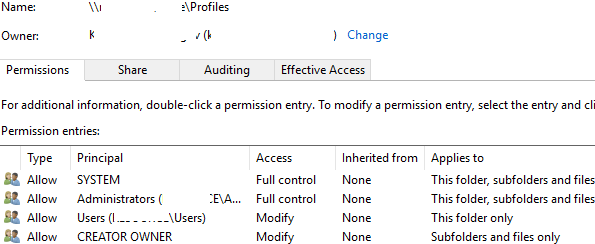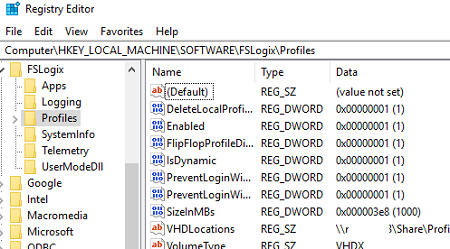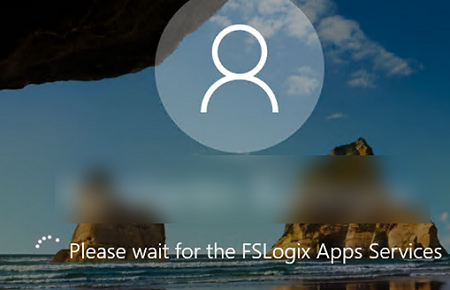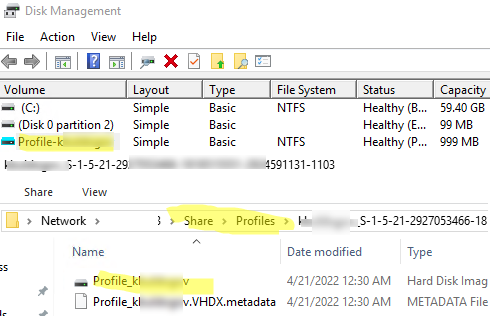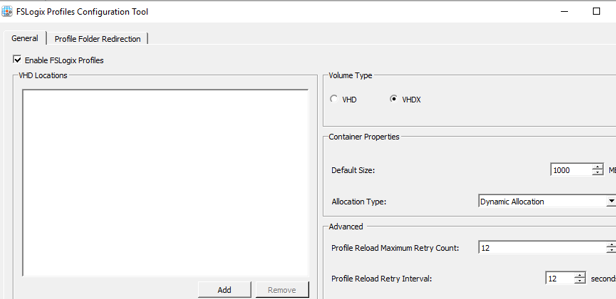Microsoft FSLogix technology is used to manage user profiles and allows you to replace Roaming Profiles and User Profile Disks (UPD) in RDS, VDI, and Windows Virtual Desktop (WVD) deployments. FSLogix allows you to dynamically connect user profile containers from shared network folders. It can be used both in on-premises environments and in Azure (you can use Azure Files as profile storage). In this article, we’ll look at how to use FSLogix user profile containers instead of User Profile Disks (UPD) in RDS deployments on Windows Server 2019/2022.
What are FSLogix Containers?
The FSLogix concept is similar to RDS User Profile Disks (UPD) when user profiles are stored as virtual (VHDX) disks and connected via the network when a user logs on to Windows. However, FSLogix allows us to get rid of many UPD disadvantages in RDS environments:
- Allows loading a user profile over the network much faster. It reduces login/logout time for a user;
- Optimized for Office 365 (Microsoft 365 for Enterprise) apps;
- The same profile may be used in different RDS collections, RDS/VDI farms, and even physical computers;
- FSLogix profile may be connected to multiple sessions at once (in read-only mode);
- In UPD, the Windows search index is cleared when a user logs out and must be regenerated at the next logon. FSLogix allows to save the search index to a user profile container;
- Provides the availability of Outlook cache files (OST, Outlook Cached Mode), Outlook search index, cache and MS Teams data, etc.;
- FSLogix roaming profiles containers can be used even on standalone RDS hosts.
The FSLogix is free to use in on-premises RDS deployments provided that you have purchased RDS CALs and they are installed on an RDS license server.
How to Install and Configure FSLogix for User Profiles on Windows Server 2019 RDS?
Let’s see how to install and configure FSLogix on a terminal RDS farm running Windows Server 2019.
- Download FSLogix (https://aka.ms/fslogix/download, about 180 MB). The tool is free;
- Extract the archive and install FSLogix
\FSLogix_Apps\x64\Release\FSLogixAppsSetup.exeagent on the RDSH server; - Then copy FSLogix administrative policy files to the Central Store of administrative GPO templates on your domain controller (fslogix.admx to \PolicyDefinitions, and fslogix.adml to \PolicyDefinitions\en-US).Learn more about how to install and update ADMX GPO templates.
Create a shared network folder on your file server to store containers with FSLogix user profiles. For example, \\mun-fs01\Share\Profiles.
Set the following NTFS permissions on the folder:
| User Account | Folder | Permissions |
|---|---|---|
| Users | This Folder Only | Modify |
| Creator / Owner | Subfolders and Files Only | Modify |
Now you can create a GPO to configure FSLogix options for RDS hosts.
Open the domain GPO management console (gpmc.msc), create a new policy, and assign it to the Organizational Unit (OU) with your RDSH servers. Expand the GPO section Computer Configuration -> Policies -> Administrative Templates -> FSLogix. Configure the following GPO options:
- Profile Containers -> Enabled – enable FSLogix profiles;
- Profile Containers -> VHD Location – specify the UNC path to the profile shared folder (
\\mun-fs01\Share\Profiles); - Profile Containers -> Delete local profile when FSLogix Profile should apply – delete a local user profile when FSLogix enabled;
- Profile Containers -> Size in MB – to set the maximum size of a profile file (30,000 MB by default);
- Profile Containers -> Dynamic VHD(X) allocation = Enabled. If you do not enable the policy, the VHD/VHDX disks of user profiles will be created with their maximum size;
- Profile Containers -> Advanced -> Prevent login with temporary profile –prevent creating temporary user profiles;
- Profile Containers -> Advanced -> Prevent login with failure –prevent log on in case of any FSLogix failures;
- Profile Containers -> Advanced -> Locked VHD retry count = 3, specify the number of attempts to access a VHD(X) file if it is locked by another process;
- Profile Containers -> Container and Directory Naming -> Virtual disk type –use VHDX disk type for a profile instead of the default VHD;
- Profile Containers -> Container and Directory Naming -> Swap directory name components –use
%username%_SIDas a format for user profile folders (instead of SID_%username%); - Profile Containers -> Store search database in profile container = Disabled – don’t store Windows Search index database in a profile container;
- Enable logging = All logs enabled —enable FSLogix logs;
- Path to logging files –set a path to FSLogix logs (
\\mun-fs01\Share\FSLogixLogs\%COMPUTERNAME%); - Days to keep log files – 7 days are enough.
Restart Windows Server to apply new GPO settings. System settings of FSLogix profiles are located under the HKLM\SOFTWARE\FSLogix\Profiles registry key.
Now, when a remote user logs in through the RDP, a notification should appear on the Welcome Screen:
Please wait for the FSLogix Apps Services
Once logging in, you can open the Disk Management console and make sure that the FSLogix user profile container is mounted as a VHDX disk. A new folder for the user profile has appeared in the share you specified.
The FSlogix administrative tools are located at C:\Program Files\FSLogix\Apps:
frxtray.exe– this tool displays the FSLogix window in the system tray and allows you to check if a user is logged in with an FSLogix profile;ConfigurationTool.exe– FSLogix profiles GUI configuration tool.
Advanced FSLogix Profile Configuration on Windows Server RDS
When you install the FSLogixAppsSetup agent on the server, several additional local groups appear. You can display these groups using Get-LocalGroup cmdlet:
Get-LocalGroup -Name "*fslo*"
FSLogix ODFC Exclude List— Members of this group are on the exclude list for Outlook Data Folder ContainersFSLogix ODFC Include List— Members of this group are on the include list for Outlook Data Folder ContainersFSLogix Profile Exclude List— Members of this group are on the exclude list for dynamic profilesFSLogix Profile Include List— Members of this group are on the include list for dynamic profiles
These groups allow set users or groups having FSLogix profiles enabled or disabled.
By default, roaming FSLogix profile containers are created for all users. To allow the members of the local Administrators group to log on to the server locally in case of any FSLogix failures, add the Administrators group to the FSLogix Profile Exclude List.
You can add users to the local group using the Restricted Group policy (Computer Configuration -> Windows Settings -> Security Settings -> Restricted Groups -> Add Group -> FSLogix Profile Exclude List) or Group Policy Preferences (Computer Configuration –> Preferences –> Control Panel Settings –> Local Users and Group –> New -> Local Group -> FSLogix Profile Exclude List).
To exclude some folders from an FSLogix roaming profile, you can use the redirection.xml file. Folders in the file are redirected to the local folders on the server’s local drive (local profile folders).
The path to the XML file with the settings is specified in FSLogix -> Profile Containers -> Advanced -> Provide RedirXML file to customize redirections GPO option. You can exclude Temp folders, IE/Edge/Chrome cache directories, etc.
Here is an example of such a file:
<?xml version="1.0"?> <FrxProfileFolderRedirection ExcludeCommonFolders="0"> <Excludes> <Exclude Copy="0">AppData\LocalLow\</Exclude> <Exclude Copy="0">AppData\Local\Packages\</Exclude> <Exclude Copy="0">AppData\Local\Microsoft\Windows\Temporary Internet Files\</Exclude> <Exclude Copy="0">AppData\Local\Microsoft\Windows\Explorer\</Exclude> <Exclude Copy="0">AppData\Local\Microsoft\Windows\WebCache\</Exclude> <Exclude Copy="0">AppData\Local\Temp\</Exclude> <Exclude Copy="0">AppData\Local\Diagnostics\</Exclude> <Exclude Copy="0">AppData\Local\Comms\</Exclude> <Exclude Copy="0">AppData\Local\Google\Chrome\User Data\Default\Cache\</Exclude> </Excludes> </FrxProfileFolderRedirection>
Analyze user profiles, and installed programs and add additional exceptions to the file.
Add FSLogix executable files to your antivirus exclusions (frxdrv.sys, frxdrvvt.sys, frxccd.sys, frxccd.exe, frxccds.exe, frxsvc.exe).
